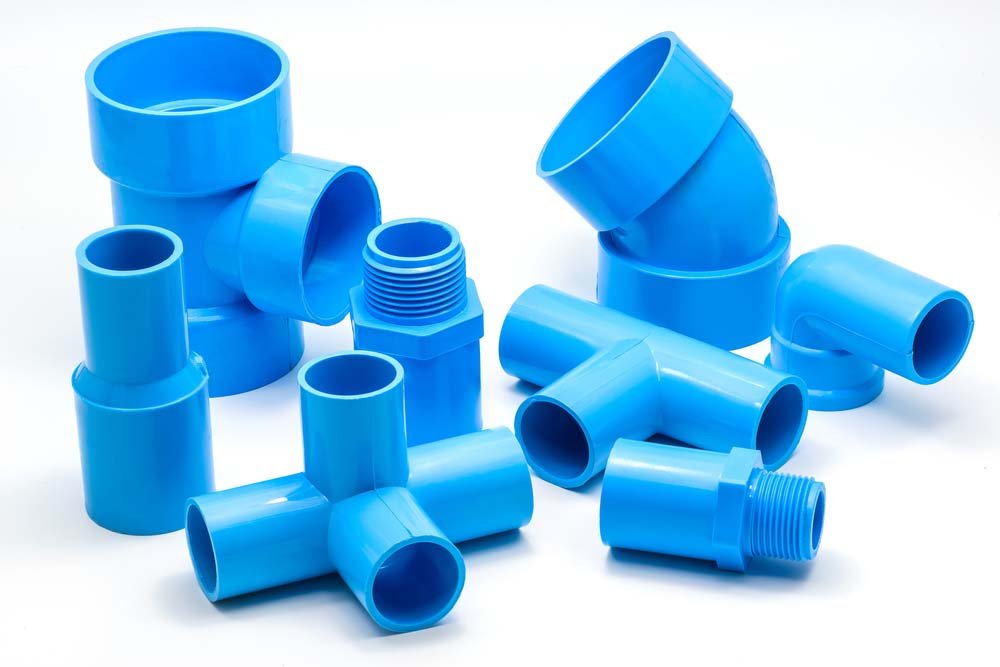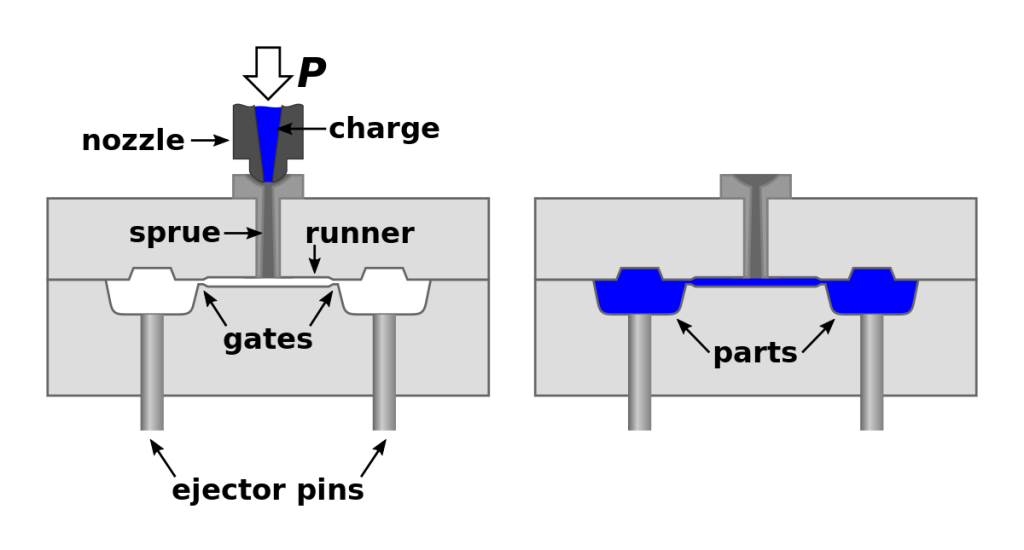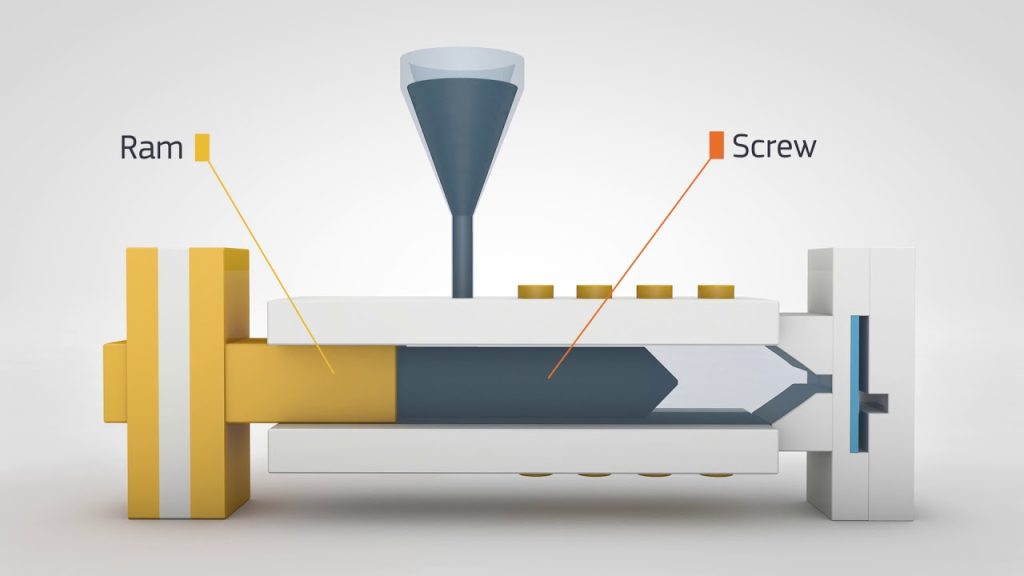Table of Contents
Polyvinyl chloride (PVC) has been used in various industries, from construction to healthcare, due to its durability and low cost. However, its usefulness extends beyond its physical properties. PVC can be molded into complex shapes, making it a popular choice for manufacturing different products. But the question remains: can PVC be injection molded?
Injection molding is a manufacturing process that involves injecting molten material into a mold to create a specific shape. While PVC can be injection molded, it requires specific conditions and considerations to ensure a successful outcome. In this article, we will explore the possibilities and limitations of injection molding PVC.
Can PVC Be Injection Molded?
PVC or Polyvinyl chloride is one of the most commonly used thermoplastic materials in the world. Its versatility, durability, and cost-effectiveness make it a popular choice for various applications. One of the most common methods of manufacturing PVC products is through injection molding. But can PVC be injection molded? Let’s find out.
What is Injection Molding?
Injection molding is a manufacturing process that involves injecting molten material, typically plastic, into a mold cavity. The molten material is then cooled and solidified, taking the shape of the mold. Injection molding is used to produce a wide range of products, from small components to large automotive parts.
Advantages of Injection Molding
Some of the advantages of injection molding include:
- High production rates
- Consistent quality
- Ability to use a wide range of materials
- Low labor costs
Can PVC Be Injection Molded?
Yes, PVC can be injection molded. PVC is actually one of the easiest materials to injection mold. It has a low melting point, which means it can be melted and molded quickly. It also has a high flow rate, which means it can fill the mold cavity quickly and evenly.
Benefits of Injection Molding PVC
Some of the benefits of injection molding PVC include:
- Low cost of production
- Ability to create complex shapes and designs
- High durability and strength
- Resistance to chemicals and weathering
Injection Molding PVC vs Other Materials
When it comes to injection molding, PVC has several advantages over other materials. For example, PVC has a lower melting point than many other materials, which means it can be melted and molded more quickly. It also has a higher flow rate, which means it can fill the mold cavity more quickly and evenly.
Table 1: Comparison of Injection Molding PVC with Other Materials
| Material | Melting Point | Flow Rate | Cost |
|---|---|---|---|
| PVC | 100°C – 260°C | High | Low |
| ABS | 217°C – 237°C | Low | Medium |
| PC | 250°C – 320°C | Low | High |
Conclusion
In conclusion, PVC can be injection molded, and it is one of the easiest materials to mold. Injection molding PVC has several benefits, including low cost of production, ability to create complex shapes and designs, high durability and strength, and resistance to chemicals and weathering. When compared to other materials, PVC has several advantages, including a lower melting point and higher flow rate. If you are considering injection molding, PVC is definitely a material worth considering.
Frequently Asked Questions
PVC, also known as Polyvinyl Chloride, is a widely used thermoplastic polymer. It has a lot of applications in various industries, including construction, healthcare, and packaging. One of the most common ways of processing PVC is through injection molding. Here are some frequently asked questions about PVC injection molding.
Can PVC be injection molded?
Yes, PVC can be injection molded. Injection molding is a manufacturing process that involves melting the plastic material and injecting it into a mold. PVC is a thermoplastic material, which means it can be melted and solidified repeatedly without affecting its properties. Injection molding is an efficient and cost-effective way of producing high-quality PVC products in large quantities.
However, there are some challenges associated with PVC injection molding. PVC has a high melting point, and it tends to degrade when exposed to high temperatures for prolonged periods. This can lead to the emission of toxic gases, which can be harmful to the environment and the workers. Therefore, PVC injection molding requires strict control of temperature, pressure, and other processing parameters to ensure product quality and safety.
What are the advantages of PVC injection molding?
PVC injection molding has several advantages over other manufacturing processes. First, it allows for the production of complex shapes and intricate designs with high precision and accuracy. Second, it is a fast and efficient process that can produce large quantities of products in a short time. Third, PVC injection molding is a cost-effective method that can reduce material waste and labor costs. Finally, PVC is a durable and versatile material that can withstand harsh environments and extreme temperatures.
However, PVC injection molding also has some disadvantages, such as the emission of toxic gases and the difficulty of recycling PVC products. Therefore, it is important to use PVC injection molding responsibly and ensure proper disposal of the waste products.
What are the applications of PVC injection molding?
PVC injection molding has a wide range of applications in various industries, including construction, healthcare, and packaging. In the construction industry, PVC products are used for pipes, fittings, roofing, flooring, and insulation. In the healthcare industry, PVC products are used for medical devices, equipment, and packaging. In the packaging industry, PVC products are used for bottles, containers, and films.
PVC injection molding is also used for consumer products such as toys, automotive parts, and electronics. PVC is a versatile material that can be customized to meet specific requirements, such as color, hardness, and flexibility. Therefore, PVC injection molding is a popular choice for manufacturers who need to produce high-quality products with consistent quality and performance.
What are the challenges of PVC injection molding?
PVC injection molding has some challenges that manufacturers need to address to ensure product quality and safety. One of the main challenges is the emission of toxic gases during the melting and processing of PVC. These gases can be harmful to the environment and the workers, and therefore, strict control measures need to be implemented to minimize their impact.
Another challenge is the degradation of PVC when exposed to high temperatures and pressure. This can lead to the formation of bubbles, warping, and other defects that can affect the product’s performance and appearance. Therefore, PVC injection molding requires precise control of temperature, pressure, and other processing parameters to ensure product quality and consistency.
How can PVC injection molding be improved?
PVC injection molding can be improved by using advanced technologies and techniques that can enhance process control and product quality. For example, the use of computer-controlled systems can help monitor and adjust the processing parameters in real-time, reducing the risk of defects and improving product consistency.
Another way to improve PVC injection molding is by using additives that can enhance the material’s properties and performance. For example, the addition of plasticizers can improve the flexibility and durability of PVC, while the addition of stabilizers can prevent the degradation of the material during processing and use.
Finally, manufacturers can improve PVC injection molding by adopting sustainable practices that reduce waste and minimize the impact on the environment. This can include using recycled PVC materials, reducing energy consumption, and implementing responsible waste management practices.
In conclusion, PVC can indeed be injection molded. This process involves melting PVC pellets and injecting the molten material into a mold cavity, where it cools and solidifies into the desired shape. Injection molding is a popular method for producing high-quality, consistent PVC products at a fast rate.
One of the advantages of injection molding PVC is that it allows for complex shapes and intricate details to be achieved with precision. This makes it an ideal choice for manufacturing items such as pipes, fittings, and electrical components. Injection molding also ensures that each product is identical, maintaining consistency and quality throughout the manufacturing process.
Furthermore, PVC injection molding is a cost-effective method of production, as it requires minimal labor and can be automated for even greater efficiency. With its versatility and efficiency, injection molding is a highly attractive option for manufacturers looking to produce high-quality PVC products quickly and reliably.
Request a quote today!
[contact-form-7 id="1578" title="Contact form"]
Please compress the file into a ZIP or RAR file before uploading. Alternatively, send through your RFQ by email.
enquires@unitymanufacture.com





